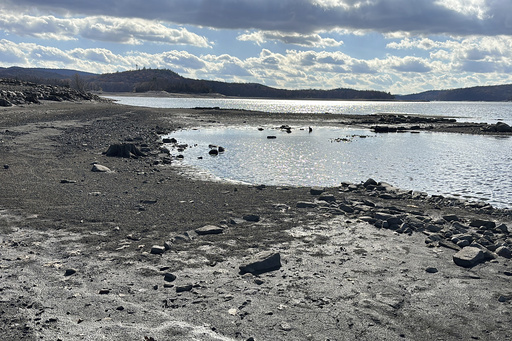
BRICK, N.J. — Following an exceptionally dry September and October, which marked the state’s driest period in recorded history, New Jersey is set to declare a drought warning. This warning serves as a significant step that could lead to mandatory water restrictions if there isn’t substantial rainfall soon.
On Tuesday, the New Jersey Department of Environmental Protection (DEP) conducted an online session concerning the ongoing conditions. However, they refrained from answering inquiries regarding whether any regions are at risk of running out of drinking water or sufficient resources to combat the wildfires currently raging in nearly five areas. After the meeting, the DEP announced a press briefing for Wednesday to discuss the state’s transition into Drought Warning status amid an ongoing dry spell.
The New Jersey Forest Fire Service outlined that the state faces its driest conditions in nearly 120 years. State geologist Steven Domber observed that water levels across New Jersey are decreasing significantly. “They are well below long-term averages, and they’re trending down,” he noted, emphasizing that without considerable rainfall, the situation is likely to decline further in the upcoming weeks.
Domber pointed out that approximately half of New Jersey’s public water systems are witnessing normal water demand, while 40% are experiencing higher than average usage. To alleviate the situation, officials indicated that roughly 10 inches (25 centimeters) of rain would be necessary, although forecasts do not predict such an amount in the near future.
The combination of elevated temperatures, drastically reduced rainfall, and an increased demand for water is putting immense strain on available resources, according to state climatologist David Robinson. He highlighted that New Jersey only received 0.02 inches (0.5 millimeters) of rain in October, significantly lower than the normal 4.19 inches (10.64 centimeters). Thus far in November, rainfall has ranged from a quarter to a half-inch (1.27 cm), while the historical average for the month is around 4 inches (10.16 cm). Since August, the state only accumulated 2 inches (5.08 cm) of rain when the expected amount should have been around a foot (0.3 meters), presenting a grim outlook for water availability.
New Jersey was under a drought watch as of Tuesday morning, activating some restrictions on outdoor fires and encouraging voluntary conservation measures. The state is contemplating moving to a drought warning, which would enforce stricter requirements on water systems and urge additional water-saving efforts. The most severe step would be declaring a drought emergency, prompting mandatory water restrictions for businesses and households.
Leading figures from public water systems have urged New Jersey to declare a drought emergency immediately. Tim Eustace, executive director of the North Jersey District Water Supply Commission, noted that the Wanaque Reservoir is currently at about 45% capacity. “Using drinking water to water lawns is kind of crazy,” he remarked, advocating for the progression to a drought emergency to halt lawn watering practices.
Recent weeks have seen New Jersey grappling with multiple wildfires, including at least five last week. The largest blaze has scorched nearly 5.5 square miles (14.24 square kilometers) along the New Jersey-New York border, leading to the unfortunate death of a parks worker from New York. As of Tuesday morning, this fire was reported to be 20% contained.
Dry conditions are also impacting New York, which issued its own drought watch last week. Mayor Eric Adams has called on residents to conserve water by taking shorter showers, fixing leaky taps, and adopting other water-saving measures. Central Park recorded only 0.01 inches (0.02 cm) of rain last month, whereas the average for October typically hovers around 4.4 inches (11.2 cm), marking the driest October in over a century according to records from the National Weather Service. Commissioner Rohit Aggarwala from the City Department of Environmental Protection emphasized the severity of the situation.
Jeff Tober, manager of Rancocas Creek Farm located in the arid New Jersey Pinelands, disclosed that his farm has received a mere 0.6 inches (1.52 cm) of rain over the last 87 days, noting, “It’s been pretty brutal.” Overall, the current environmental conditions in both New Jersey and New York continue to evolve, necessitating ongoing attention and responsive measures.
